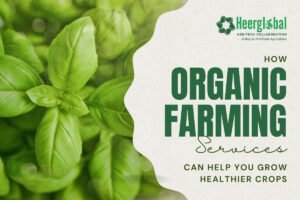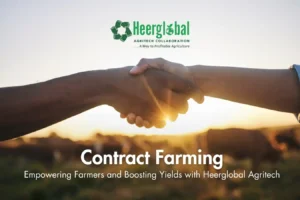10 Reasons Why Protected Cultivation Revolutionize Farming Experience!
Protected cultivation, also known as controlled environment agriculture, offers numerous benefits that can transform your farming journey. From extended growing seasons to enhanced pest and disease control, this method provides a controlled environment for optimal plant growth. With reduced water usage, higher yields, and protection from extreme weather conditions, protected cultivation allows for greater efficiency and sustainability. Moreover, it enables the cultivation of a wider variety of crops, even in regions with challenging climates. Explore how embracing protected cultivation can revolutionize your farming experience and yield remarkable results.
There are several benefits associated with protected cultivation
Benefits Protected Cultivation
1. Climate Control:
Protected cultivation allows growers to control temperature, humidity, and light levels, creating an optimal microclimate for plant growth. This is particularly advantageous in regions with extreme weather conditions or seasonal variations.
2. Extended Growing Season:
By sheltering crops from adverse weather conditions such as frost, wind, or excessive rain, protected cultivation enables growers to extend the growing season. This can result in higher yields and a longer harvesting period.
3. Water Conservation:
The enclosed environment of protected structures reduces water loss through evaporation, leading to more efficient water use. Additionally, irrigation systems can be optimized for precise water delivery, minimizing wastage.
4. Pest and Disease Management:
Protective structures act as a barrier against pests, insects, and pathogens, reducing the need for chemical pesticides and fungicides. This promotes healthier plants and minimizes the risk of crop losses due to pest infestations.
5. Improved Crop Quality:
Controlled environmental conditions facilitate uniform growth, leading to higher-quality produce with desirable characteristics such as size, color, flavor, and nutritional content. This can enhance market value and consumer appeal.
6. Optimized Resource Utilization:
Protected cultivation allows for the efficient use of resources such as land, water, and fertilizers. Vertical farming techniques and hydroponic systems further maximize space utilization and productivity.
7. Reduced Environmental Impact:
By minimizing the use of agrochemicals and optimizing resource efficiency, protected cultivation can contribute to reducing environmental pollution and greenhouse gas emissions associated with conventional agriculture.
8. Crop Diversification:
The ability to manipulate environmental conditions enables growers to cultivate a wide range of crops, including those that are not well-suited to the local climate or soil conditions. This promotes crop diversification and can mitigate risks associated with monoculture.
9. Higher Yield Potential:
With better control over growing conditions, protected cultivation often results in higher yields per unit area compared to open-field farming. This can improve profitability for growers and contribute to food security.
10. Innovation and Technology Adoption:
Protected cultivation encourages the adoption of innovative farming practices and technologies such as hydroponics, aquaponics, and automated climate control systems. This fosters continuous improvement and sustainability in agriculture.
Overall, protected cultivation offers a range of benefits that contribute to more efficient, sustainable, and resilient food production systems, making it an increasingly popular practice worldwide.
Heerglobal Agritech Collaborations Pvt. Ltd. specializes in providing protected cultivation services, offering a range of benefits for efficient, sustainable, and resilient food production systems. Their expertise in this field makes them a trusted partner for clients seeking innovative solutions in agricultural production.
Conclusion: Protected cultivation offers numerous benefits such as increased yield, resource efficiency, and resilience against weather and pests. Embracing this method is crucial for building sustainable food systems and ensuring food security in the face of climate change.




